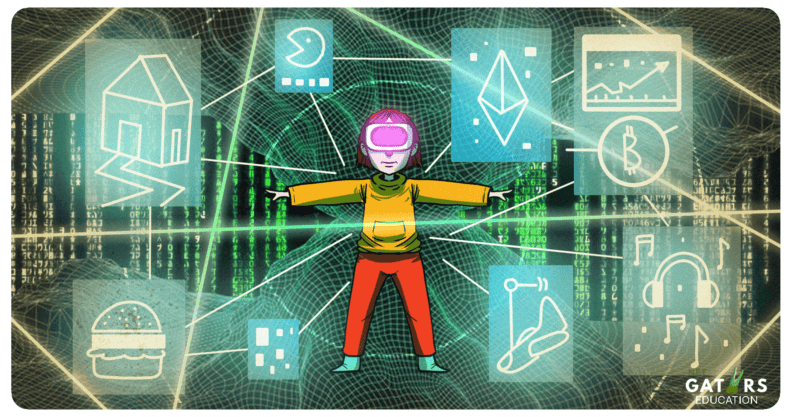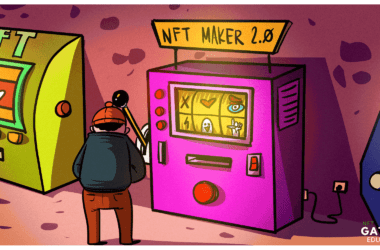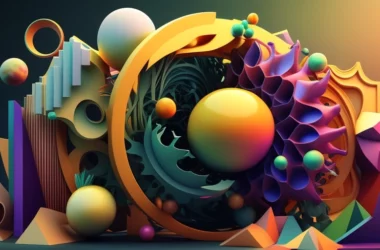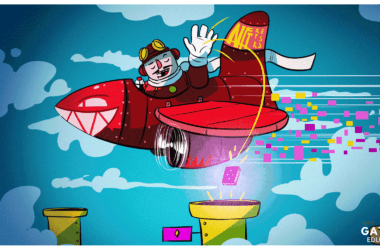Last Updated on February 4, 2023
In 1993, AT&T made an ad that depicted their vision of what the future would look like. Some stuff they got right, other things – not so much. The information out there about the metaverse, what it is, and what it will be, is often portrayed in a similar vein.
As it stands, much of what is being said about the metaverse (such as Facebook suggesting that we will be able to attend actual concerts in holographic form) is still a long way away, if possible at all.
That being said, the metaverse is far beyond just a concept. And while some fanciful notions are floating around about what futuristic form it will take, the metaverse has already taken shape, and there are some real-life applications that we can already see in action today.
With NFTs reinvigorating the digital market, floodgates have opened for artists and creators to sell their goods with peace of mind. This same technology is now being used to buy and sell virtual properties, and the blockchain is even carving out an entirely new gaming genre called play-to-earn. Interested? Let’s find out more.
The metaverse: In a nutshell
In its most basic form, the metaverse is a persistent virtual world that exists even when it’s not being interacted with. These virtual worlds often facilitate their own digital economy that enables users to buy, sell, and trade virtual goods, upon which they will completely own those items.
Virtual goods come in the form of non-fungible tokens (NFTs), which are unique digital items. No two NFTs are the same. Through the shared understanding that virtual land, art, collectibles, and other in-game items are genuinely unique, people are willing to spend millions on them since there is an inherent value to these items thanks to their provable scarcity.
One of the most interesting aspects of the metaverse and the collection of virtual worlds is that they are theoretically interoperable. That means that the goods you obtain or purchase in the metaverse can be used in other participating games and landscapes.
Right now, most platforms have avatars and inventories that are tethered to their game alone, like Fortnite or World of Warcraft. But in a metaverse, you could construct an avatar or virtual persona that you can equip with items obtained virtually and play with them throughout the ecosystem – kind of like the “‘Ready Player One.”
In many ways, the future of the metaverse is being sold as a genuine alternative to the real world. Where different experiences, be they game modes, movies, or shopping malls, are seamlessly connected just as they are in real life – except in real life, you can’t turn into a little purple dragon or storm the beaches of Normandy.
The rise of the virtual world
For a long time, people have imagined a future in which technology solves their problems and allows them to get off the proverbial hamster wheel in order to spend more time appreciating the finer things in life. The metaverse is, in some ways, a clichéd depiction of that future.
With Facebook rebranding to Meta and Microsoft joining the fray, public interest in the metaverse is growing. Meta CEO Mark Zuckerberg recognizes the deep human yearning to escape into a fantasy world. It’s in books, movies, and TV shows, and if you could read the mind of a daydreaming kid staring out the window, there’s a high probability that whatever they’re dreaming about is feasible in the metaverse.
Aside from pure escapism and blockchain-based gaming, numerous industries look set to benefit from the metaverse, as long as they are willing to put in the work to capitalize on this exciting new technology. One industry that has benefited dramatically has been the art world, largely thanks to NFTs giving them a real avenue to sell their works without worrying about plagiarism and copyright infringement.
As it turns out, the metaverse is one of the most popular places to buy and sell NFT art, with a wide variety of digital showrooms open to prospective buyers across the metaverse. With pieces selling for tens of millions of dollars, it’s easy to see why the metaverse and the NFT trend is one that simply cannot be ignored.
The major participants in the metaverse
According to Statista, as of October 2021, the total market capitalization of the metaverse, Facebook, and gaming globally is $14.8 trillion.
Here are some significant players in the field:
Facebook– Meta
Once Facebook officially rebranded its name to Meta (to mark a statement of intent on its new focus on the metaverse), it was obvious for everyone to see just how big of a deal this space was going to become. After all, this was no small move, since it made it abundantly clear that the company sees the metaverse as the next internet iteration and hopes to preemptively establish a foothold in the market.
On that note, do you remember that video at the beginning of the article about AT&T’s 1993 depiction of what they thought the future would look like? Well, Meta’s presentation on the future of the metaverse feels strikingly similar.
Microsoft
Microsoft is already a significant player in the gaming industry, with the Xbox consoles and Minecraft under its repertoire. It seems a natural step for the company to get involved in the future of gaming, digital commerce, and life as we know it.
The company already offers its goods and services in both the physical and digital worlds. When the metaverse converges the two, Microsoft wants to be ahead of the game.
Roblox
Roblox is a video game platform that believes the metaverse will be “somewhere people can come together within millions of 3D experiences to learn, work, play, create, and socialize.” Their platform is unique because it allows users to program their games as well as play games made by other users.
Epic Games
The company behind the global gaming sensation, Fortnite, is already implementing components of the metaverse into its platform. Their Unreal Engine created virtual concerts, dance parties, and even an interactive MLK civil rights museum.
While some of the components of the metaverse are already here, there is still a long way to go before we are flying from a shopping mall to a battlefield and then to the bat cave. With that being said, there is no doubt that with the combined efforts and deep pockets of tech giants around the world, there is a good chance that many of us will live long enough to get the chance to play out our wildest fantasies in a virtual world.
FAQ
What are some examples of metaverse platforms?
Some examples of metaverse platforms include Decentraland, The Sandbox, and of course, the company aiming to bring metaverse into adoption - Meta.
What is the connection between the metaverse and NFTs?
NFTs play an important role in the metaverse by representing digital assets and enabling their ownership, transfer, and trade. In the metaverse, NFTs can be used to represent virtual real estate, characters, items, and other virtual assets that are unique and cannot be duplicated.





